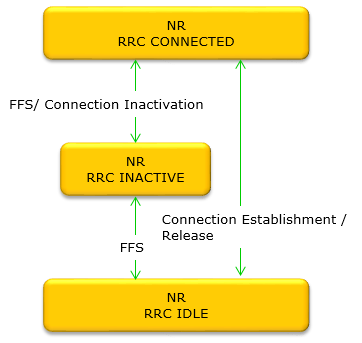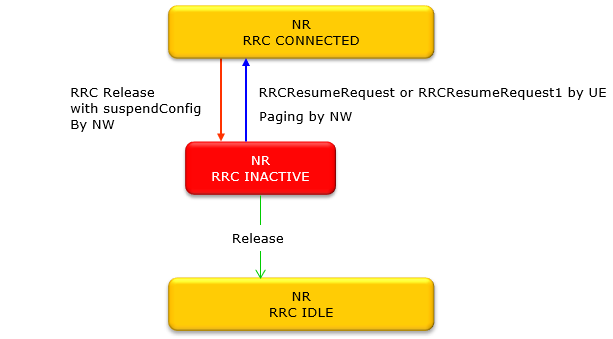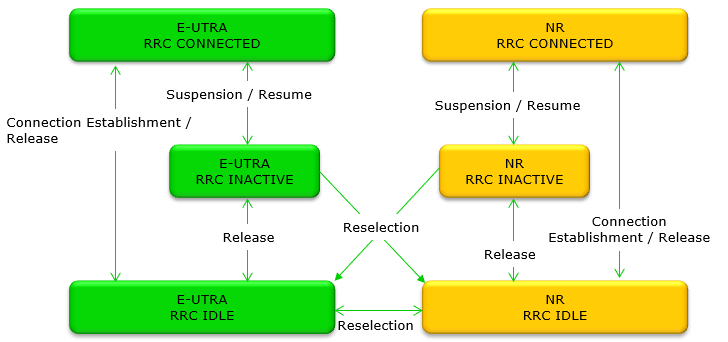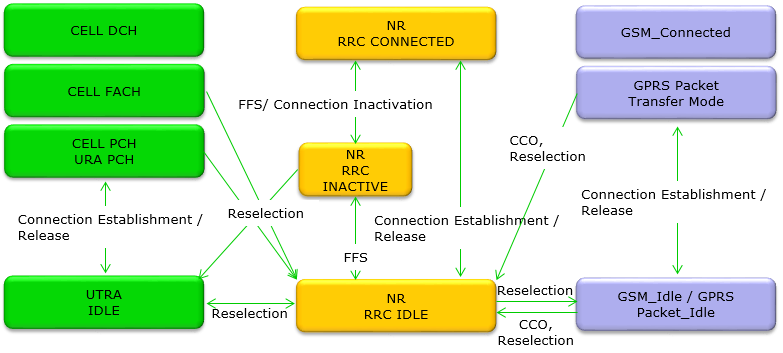|
|
||
|
RRC stands for Radio Resource Control. I personally define RRC as a common language that should be understood by both Network and UE. As you know, UE and Network is communicating via radio channel. Every parties participating in the communication should exchange a lot of information to make the real data exchange possible. In other words, the final goal of communication is to exchange the data (user data) between communicating parties, but to make this happen there are a lot of things (especially a lot of lower layer issues) that need to be configured in common. In case of low end communication system, those common configuration is done before the product is released into market and once they are released, those configuration would not change. However, in many high end communication system (e.g, cellular communication) these configuration should change dynamically for optimal configuration at the time of communication. Then the question is how both parties in the communication reach agreement on those common configuration. To do this, we need a special control mechanism to exchange informations on those configurations between communicating parties. The resulting implementation of this control mechanism is called RRC (Radio Resource Control). Another central role of RRC within each communicating party (i.e, within UE and Network) is to work as a control center for all of the lower layers within each system. The collection of all the lower layers within UE or basestation is called 'Radio Resource' (i.e, resources required to make radio communication possible). The major role of RRC is to control(configure) all the Radio Resources (PHY, MAC, RLC, PDCP) to make it possible to communicate between UE and the base station (e.g, gNB, eNB, NB, BTS etc). In this page, I will give you the brief introduction to RRC in NR. In fact, RRC is a huge topic because it eventually get involved in whole protocol stack. So it would be difficult to describe the wholes details of RRC in single page. So I would just talk about overall RRC structure / functions in this page and for further details I will write many separate pages and put the links in this page.
RRC State in NRWhen you think of RRC in NR only, it can be illustrated as shown below. Do you see any difference from LTE RRC ? Yes, you might have noticed that a new block (state) are introduced in NR. It is 'NR RRC INACTIVE'. Full details of this new state is not fully defined in the specification yet, but my first impression of the function and purpose of this new state would be similar to the combined functionality of CELL PACH and CELL/URA PCH in UMTS RRC State Change process. < TR 38.804- Figure 5.5.2-1 : UE state machine and state transitions in NR >
NR RRC CONNECTED <-> INACTIVE State ChangeUnlike LTE, in NR there is a addition RRC states between RRC Connected and Idle and Network/UE can optionally stay in INACTIVE state without completely releasing the RRC when there is no traffic and quickly switch back to CONNECTED states when necessary. To me, RRC INACTIVE state is similar to the combination of FACH and PCH in UMTS. Actually Use case of INACTIVE state is almost same as FACH/PCH in UMTS. The switching between RRC CONNECTED and RRC INACTIVE state happens as shown below.
The details of this transition is described in a separate note : RRC INACTIVE NR RRC Interaction with LTE RRCNR RRC does not only involved in NR but also in other radio access technology as well. The interaction of NR RRC and LTE RRC can be illustrated as follows. Things to be noticed here are
< 36.331 v16.5-Figure 4.2.1-6: Mobility procedures between E-UTRA/EPC, E-UTRA/5GC and NR >
NR RRC Interaction with UTRAN / GERAN RRCThe interaction of NR RRC and UMTS / GSM RRC can be illustrated as follows. Things to be noticed here are
< TR 38.804 - Figure 10.2-3:UE state machine and state transitions between NR and UTRAN/GERAN>
Reference[1]
|
||



